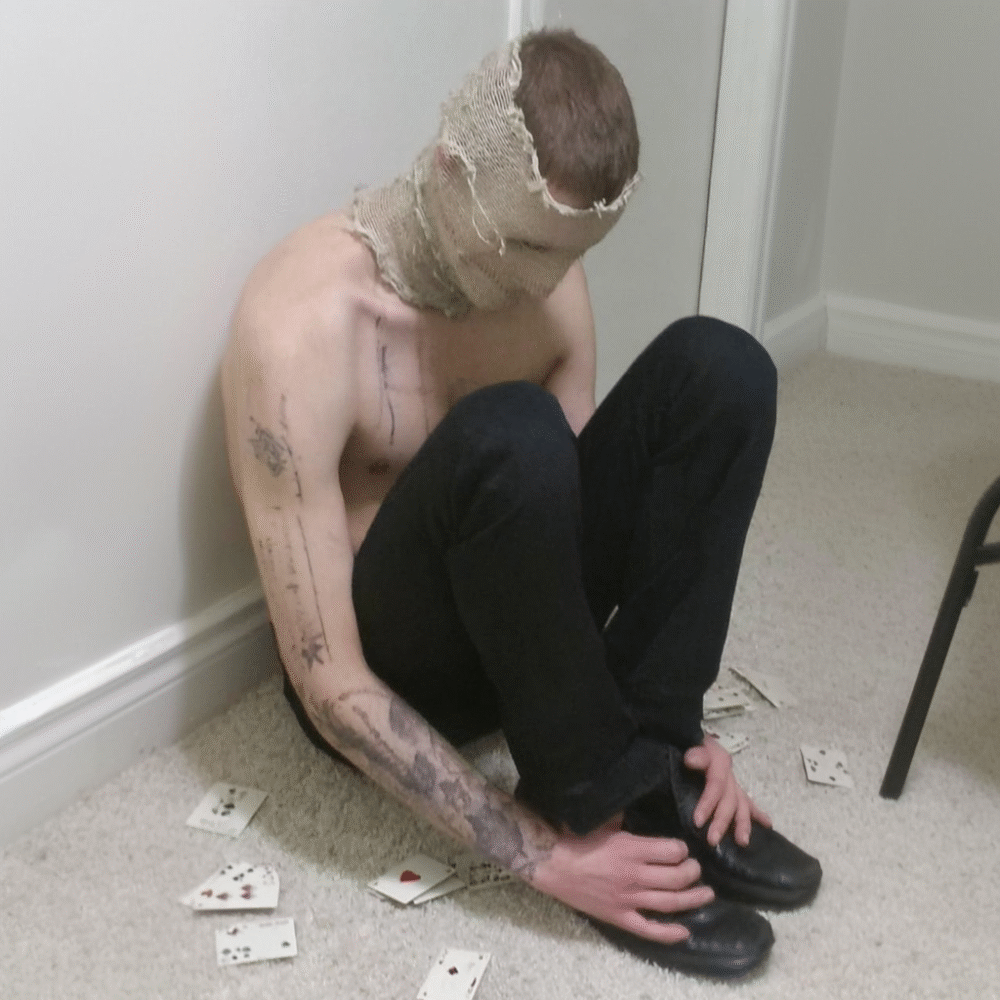We are living in an age defined by fluid surfaces and imperceptible seams. Digital tools are designed to vanish, as extensions of the soma and psyche. Artificial intelligence is no longer framed as a rupture, but as a solution, the inevitable Telos in the lineage of technological proliferation. Friction is not only removed in our current techno-political climate, it is pathologized. In this cultural atmosphere of seamless efficiency and aesthetic predictability, the work of Berlin-based artist Icysaw operates as a deliberate glitch. It does not offer resolution. Instead, it holds the viewer in a state of suspended unease. Icy’s images conjure affect, soft violence, stilled tension, and the eerie half-presence of the synthetic. A man slumped in the middle of an empty road. A face shrink-wrapped in translucent plastic. A woman submerged in a soup bowl. The images are not grotesque in any traditional sense. They are not graphic. But they haunt, in a liminal space between the familiar and the abject, they rouse a sense of post human dystopia.
What we encounter in the work of Icysaw is not the future of AI aesthetics but a meditation on its residue. In contrast to generative trends that lean toward the spectacular or hyper-designed, Icy’s world is lo-fi, vacant, ambient. It draws from the banal architecture of post-Soviet urbanity, underpasses, corridors, low-ceilinged flats, rendering not spectacle but estrangement. These are the non-places of Marc Augé, made spectral through machinic vision.
View this post on Instagram
“I mainly want the viewer to experience that uncomfortable feeling,” he explains. The discomfort, however, is not tied to horror or explicit violence. It is a quieter rupture. A dissonance born of misrecognition. A synthetic face that is too still. A body that feels too generic. A scenario that seems both uncanny, like a dream remembered, and yet wholly unsettling.
There is a tension in the artists imagery that maps directly onto the philosophical conditions of post humanism. The figures they generates are not quite people, but they are not not people either. They occupy a liminal zone where human affect is simulated but hollow. This is not the cyborg of Haraway. It is something softer, more dangerous: the vacant emotional double. These characters are passive, often cloistered, suffocated or on the edge of mutilation, but seem unsettlingly blank. They invite us to watch them suffer or glitch or stall. And yet we are implicated in the act. We view them like we view TikToks or surveillance loops, caught in a strange affective register that wavers between empathy and voyeurism.
View this post on Instagram
Icy’s work is a meditation, mostly on posthuman affect. The images here mirror our anxieties about embodiment, about digital touch, about what it means to be “real” in a world increasingly mediated through simulations. In the work, AI is not a tool of enhancement. It is a spectre. A thing that mimics presence just enough to destabilize it.
Icy notes, “These images aren’t showing real people, they were just AI-generated. But because they look so human, we still respond to them emotionally.” This gap between recognition and knowing is precisely where uncanniness resides. As Freud reminds us, the uncanny emerges when something once familiar becomes estranged through its doubling. In Icy’s work, the double has no origin. The human was never there to begin with.
AI, here, is not merely a generator but a logic. It is the logic of late capitalism, of accelerationism, of content. The algorithm flattens identity into patterns, interpolating fragments of faces, gestures, and scenography into something legible but hollow. Icy’s refusal to beautify or narrativize these fragments is, in itself, a political gesture. Where others use AI to seduce, to profit, to idealise, he uses it to estrange. In rendering the machinic not as a future utopia or dystopia, but as a banal, eerie present, Icy presents a Brechtian distantiation, a moment where through rupture, we come to see the present moment of technological disembodiment for what it really is. A body with no pulse. “It’s just the time we’re living in,” he writes. “AI is everywhere, and no one really knows what’s real.”
View this post on Instagram
The use of absurdity in the artist’s work also speaks to this Brechtian form of absurdist estrangement pervasive in contemporary culture at the moment. An apple with human teeth, a masked man curled in fetal position beside a television; these images disrupt any clean reading of the work, offering no narrative, no explanation, no closure; rather they imbue raw affect, and paradoxically they instantiate that genuinely human phenomenon, emotion.
In this sense, Icysaw occupies a peculiar place in the discourse on posthuman aesthetics. It does not offer transcendence, nor does it mourn the loss of the human. Instead, it stages a kind of ontological stuttering. A reminder that in the algorithmic age, even subjectivity is up for grabs. Emotion becomes a residual effect of pattern recognition, both in spite of and in reaction to the uncanny of the artifice of AI. This is not to say the work is nihilistic. It is, in fact, deeply felt. “The point is not to comfort,” the artist says. “It’s to disturb, softly.” This soft disturbance is its own form of critique.
View this post on Instagram
In a world where AI-generated content is increasingly aestheticized for mass consumption, corporate moodboards, synthetic influencers, frictionless brand campaigns, Icy’s work steps back. It reminds us that the uncanny is not simply a glitch in the matrix. It is the matrix. And we are already inside of it. The question is no longer whether we can tell what’s real. The question is whether that distinction still matters.

Cody Rooney is the Editor in Chief and senior contributor at liminul.
He is a PhD candidate, digital content specialist, writer, editor, multi-media artist, and photographer.

